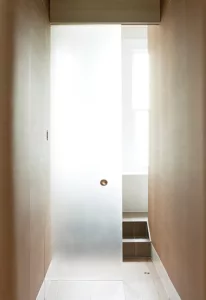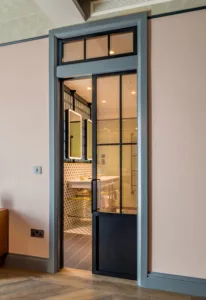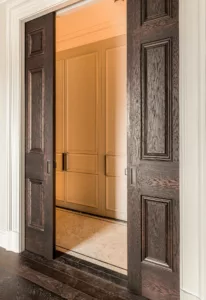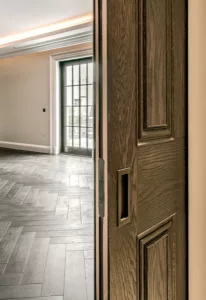What is the biggest problem with sliding pocket doors?

You can watch the video of this blog here
Pocket sliding doors very often get a bad rap, which we think is unfair.
Prepare and treat them right, and they go in like a dream. They are an excellent tool to have in your kit when designing a space. These videos and articles are aimed at being useful to you, regardless of the system you use.
Would we like you to use the Enigma pocket sliding door system?
Yes, of course. However, if we can make your life easier (regardless of whether you use Enigma or not), we have achieved our mission of simplifying your life.
You are very welcome. 🙂
The BIGGEST stumbling block we have found in our 13+ years of selling sliding pocket doors is not actually the system itself but the quality of the structural opening that is built.
Almost all sliding pocket door systems come with instructions (if it doesn’t, send it back and buy a different system!). They will, or should, provide a calculator of some kind to calculate the opening size and provide guidance. However, there are four KEY items you must tick off to get the smoothest install possible:
1. Width and height
An accurate calculation of the width and height is imperative. This is calculated from the door leaf size or clear opening size you require and is done one of 3 ways (in our experience):
- You calculate the W&H using a formula provided by the supplier
- You calculate the W&H using a calculator
- The supplier provides you with the W&H on their door schedule.
SELO ACADEMY TOP TIP:
When calculating the height of the structural opening make sure you add the finished floor build up. For example, if your structural opening height is 82.68 inches and your finished floor build up is 0.98 inches, the structural opening height you need to build to is 83.66 inches. This allows the correct gap underneath the door once installed.
2. Square & True head stud
Make sure the head stud is square and true. If it is twisted this will throw out the head channel and sliding track resulting in issues with the door.
3. Correct head stud material
The head stud must be the right material to allow the pocket door head track to be easily and robustly fixed.
Timber is the ideal material choice (a timber stud is perfect). If you are using a steel stud system, use the correct-sized timber insert rather than scraps of plywood or OSB board, which don’t provide the optimum fixing.
4. Stud size and drywall thickness must be correct.
The stud width must be 3.7 inches (if using steel stud system, 3.7-inch head and base track and 3.62-inch studs)
Drywall must be 1 or 2 layers of 12.5mm drywall on either side of the pocket. The system configuration will determine this. For example, with the Enigma system we can accommodate almost any configuration. Just let us know, you will follow our bespoke process which the friendly expert team will guide you through very willingly!
So that’s it, your four top items to achieving the perfect structural opening for your sliding pocket door.
Good luck!













